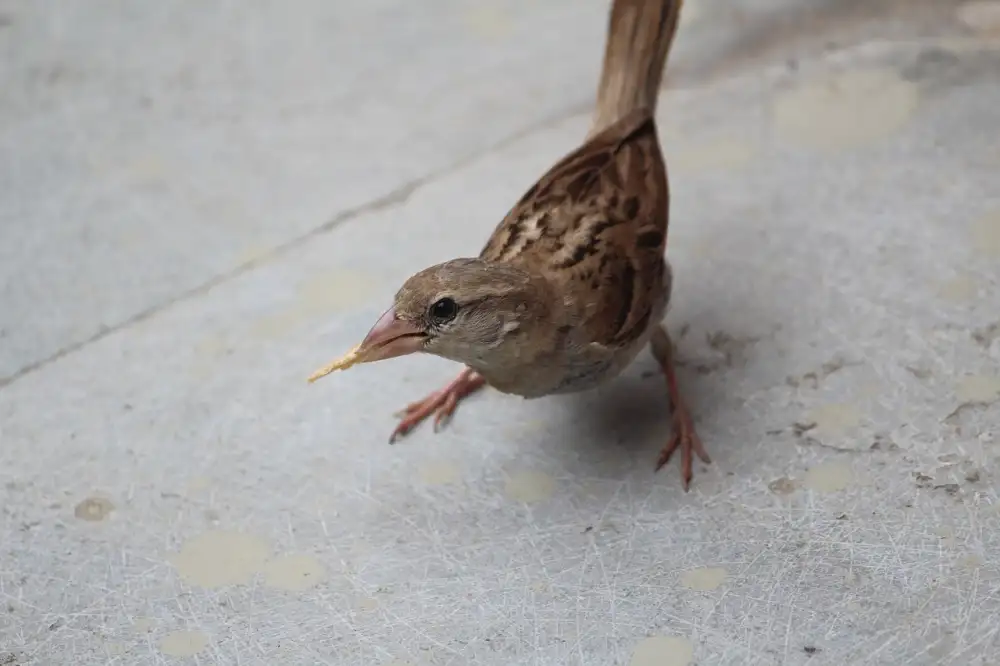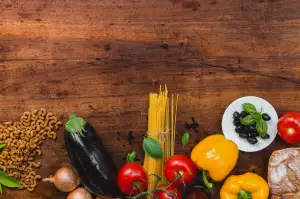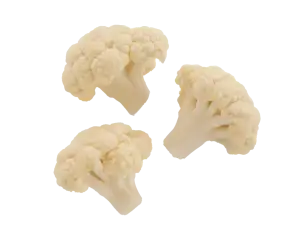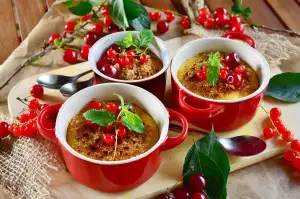Master the Art of Making Chapati: Elevate Your Cooking Skills with this Authentic Indian Delight

Chapati, also known as roti or phulka, is a traditional Indian flatbread that has been enjoyed for centuries. It is a staple in Indian cuisine and is loved for its versatility and delicious taste. Whether you are a beginner in the kitchen or an experienced cook, mastering the art of making chapati will elevate your cooking skills and allow you to explore the rich flavors of Indian cuisine. So, let's dive into the world of chapati and discover how to create this authentic Indian delight.
History and Origins of Chapati
Chapati, a popular flatbread in Indian cuisine, has a rich history that dates back centuries. Its origins can be traced to the Indus Valley Civilization, where evidence of wheat cultivation and bread-making techniques have been found. Over time, chapati became a staple food in various regions of India, each adding its own unique touch to the recipe. It is believed that chapati was initially made by grinding wheat into flour and mixing it with water to create a dough. The dough was then rolled out and cooked on a hot griddle or tawa. Today, chapati continues to be an integral part of Indian meals, loved for its simplicity and versatility.
Ingredients Required to Make Chapati
To make chapati, you will need the following ingredients:
1. Whole wheat flour: This is the main ingredient for chapati. It gives a nutty flavor and a soft texture to the bread.
2. Water: You will need warm water to knead the dough. The amount of water may vary depending on the quality of the flour.
3. Salt: A pinch of salt enhances the taste of chapati.
4. Oil or ghee: A small amount of oil or ghee is used for cooking the chapati on a griddle or tawa.
These simple ingredients come together to create a delicious and versatile Indian flatbread that can be enjoyed with various dishes.
Step-by-Step Guide to Making Chapati
To make chapati, you will need the following ingredients: whole wheat flour, water, salt, and oil or ghee for cooking.
1. Start by mixing the flour and salt in a large bowl. Gradually add water while kneading the dough until it becomes soft and pliable. The dough should not be too sticky or too dry.
2. Divide the dough into small portions and roll each portion into a ball. Dust your work surface with flour to prevent sticking.
3. Take one ball of dough and flatten it with your hands. Then, using a rolling pin, roll it out into a thin, round shape. Rotate the dough as you roll to ensure an even thickness.
4. Heat a tawa or non-stick pan over medium heat. Place the rolled-out chapati on the hot pan and cook for about 30 seconds or until bubbles start to form on the surface.
5. Flip the chapati using tongs or a spatula and cook for another 30 seconds on the other side. Press lightly with a clean cloth or spatula to help it puff up.
6. Remove from heat and brush with oil or ghee on both sides to keep them soft and prevent drying out.
7. Repeat steps 3-6 for each ball of dough until all chapatis are cooked.
8. Serve warm with your favorite curry or dish.
By following these simple steps, you can master the art of making delicious chapatis at home!
Tips and Tricks for Perfect Chapati
To achieve the perfect chapati, here are some tips and tricks to keep in mind:
1. Use the right flour: Chapatis are traditionally made with whole wheat flour (atta). This type of flour gives chapatis their characteristic texture and flavor.
2. Knead the dough well: Properly kneading the dough is crucial for soft and pliable chapatis. Knead the dough for at least 5-7 minutes until it becomes smooth and elastic.
3. Rest the dough: After kneading, allow the dough to rest for at least 30 minutes. This helps relax the gluten and makes rolling out easier.
4. Roll evenly: When rolling out the chapati, make sure to roll it evenly from all sides. This ensures that it cooks evenly and puffs up nicely.
5. Control the heat: Adjusting the heat while cooking is important to get perfectly cooked chapatis. Start cooking on medium-high heat, then reduce to medium-low once you start seeing bubbles forming on the surface.
6. Flip at the right time: Flip the chapati when you see small bubbles forming on one side. Cook for a few seconds on the other side, then flip again to cook until golden brown spots appear.
7. Apply ghee or oil: To keep your chapatis soft and flavorful, lightly brush them with ghee or oil after they come off the heat.
By following these tips and tricks, you'll be able to master the art of making perfect chapatis every time!
Variations and Regional Differences in Chapati
While the basic recipe for chapati remains the same, there are several variations and regional differences that add unique flavors and textures to this Indian delight. In different parts of India, you will find chapatis with distinct characteristics.
In North India, the traditional chapati is made with whole wheat flour and water. It is rolled out into thin circles and cooked on a hot griddle. The result is a soft and slightly chewy bread that pairs well with rich curries.
In South India, a popular variation of chapati is called "parotta." Parotta is made with all-purpose flour instead of whole wheat flour. It is layered with ghee or oil, folded, and then rolled out into thin circles. When cooked, parotta becomes flaky and crispy, making it perfect for dipping in spicy chutneys.
In Gujarat, a state in Western India, they make "thepla," which is a spiced version of chapati. Thepla dough includes ingredients like fenugreek leaves, turmeric powder, red chili powder, and other spices. These flavorful chapatis are often enjoyed as a breakfast or snack item.
In Rajasthan, another state in Western India known for its rich cuisine, they make "bajra roti." Bajra roti is made using pearl millet flour instead of wheat flour. These rotis have a slightly nutty flavor and are typically served with dal or spicy curries.
In Punjab, another northern state famous for its food culture, they make "makki di roti." Makki di roti is made using cornmeal instead of wheat flour. These rotis have a distinct yellow color and are often paired with sarson ka saag (mustard greens curry).
These variations highlight the diverse culinary traditions within India and showcase how each region puts its own spin on this beloved bread. Exploring these different types of chapatis is a delightful way to experience the rich tapestry of Indian cuisine.
Serving Suggestions and Pairings with Chapati
When it comes to serving chapati, the possibilities are endless. This versatile Indian bread pairs well with a variety of dishes and can be enjoyed in numerous ways. One classic combination is to serve chapati with dal (lentil soup) or curry. The soft and fluffy texture of the bread complements the rich and flavorful curries perfectly. You can also use chapati as a wrap for fillings such as vegetables, paneer (Indian cheese), or grilled meats. Another popular option is to serve chapati alongside raita, a refreshing yogurt-based side dish that helps balance out the flavors of spicy dishes. Whether you choose to dip it, stuff it, or wrap it, chapati is sure to enhance any meal with its delicious taste and versatility.
Health Benefits of Including Chapati in Your Diet
Including chapati in your diet can provide numerous health benefits. Firstly, chapati is made from whole wheat flour, which is rich in fiber. This helps in digestion and prevents constipation. Secondly, chapati is low in fat and cholesterol, making it a healthier alternative to other breads. It also contains essential nutrients like iron, calcium, and B vitamins. Additionally, chapati has a low glycemic index, meaning it releases sugar slowly into the bloodstream, helping to regulate blood sugar levels. Lastly, the simplicity of chapati allows for easy digestion and absorption of nutrients by the body. Incorporating chapati into your diet can contribute to a balanced and nutritious meal plan.
In conclusion, chapati is not just a simple flatbread; it is a versatile and delicious staple of Indian cuisine. Its history and origins date back centuries, and its popularity has only grown over time.
By mastering the art of making chapati, you can elevate your cooking skills and add an authentic Indian delight to your repertoire. With just a few basic ingredients and a step-by-step guide, you can create this soft and flavorful bread in no time.
But don't stop there! Experiment with different variations and regional differences to discover new flavors and textures. Whether it's adding spices or using alternative flours, the possibilities are endless.
Chapati pairs well with a variety of dishes, from curries to grilled meats. Its neutral taste makes it the perfect accompaniment to any meal. And let's not forget about its health benefits – being low in fat and high in fiber, chapati is a nutritious addition to your diet.
So why not embrace the versatility of chapati? Take your cooking skills to the next level by incorporating this authentic Indian delight into your meals. Your taste buds will thank you!
Published: 20. 11. 2023
Category: Food



